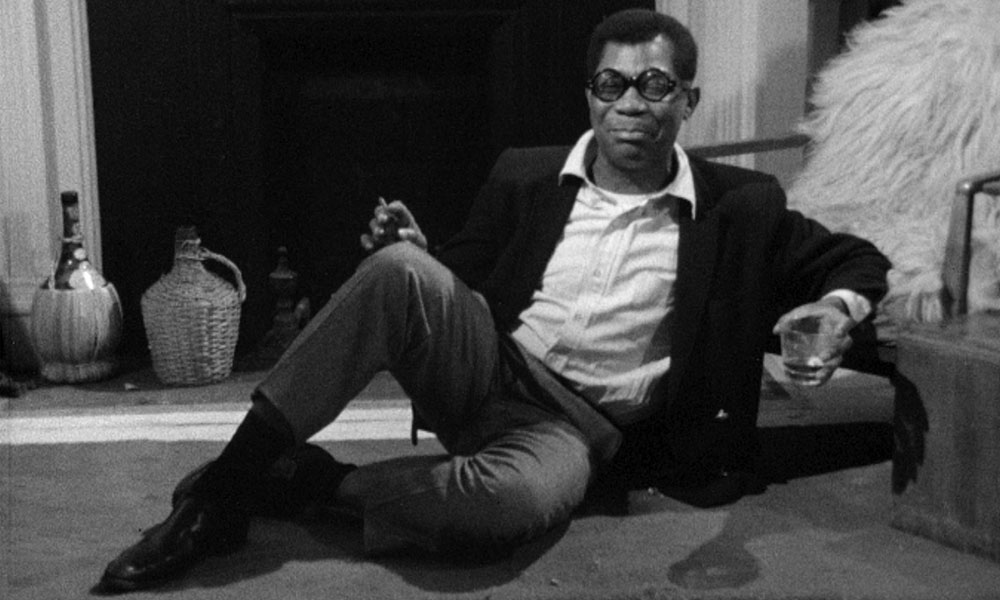Beaming at the center of director Shirley Clarke’s pugilistic study of American antagonisms sits Jason Holliday, né Aaron Payne, a Black, queer struggling actor who seems to live his life somewhere at the nexus of street hustler, court jester, and glamorous vortex of pathos.
Portrait of Jason was shot overnight on December 3–4, 1966, in Clarke’s apartment at the Chelsea Hotel, and cut down from 12 hours of footage to the 105 minutes we see of cajoling, haranguing, and alcohol-plying our singular talking head as he recounts hustling in San Francisco, working as a houseboy for racist white women, tricking in New York, and being beaten by his father, “Tough,” for being a queer child, all delivered with a snap and a refrain, “I’ll never tell.” As Jason talks and drinks, time melts. Clarke kept recording sound while the camera’s reels were changed so cuts are less sharp, and as the camera and our vision continually adjust to Jason’s face, we begin to feel drunk on speech. There is no outside to the hotel room and no one else in the visual world except Jason and his implied audience, Clarke and her then-partner, the Black actor Carl Lee, who fight Jason from behind the camera and whose captivated, withering view we are forced to share.
Though everyone from Ingmar Bergman to Marlon Riggs have seen something resplendent in Clarke’s film and Jason’s psychedelic charisma, even if it required one to look against the film’s jagged grain, the question of who’s really getting played is not the most interesting thing we can ask about Portrait of Jason more than 55 years later, many cycles into its reappraisals and critiques. We may, instead, begin to ask questions about the politics of pain that Jason both dramatizes and disavows. The film opens with Jason holding a copy of THE East Village OTHER, the first and last words printed in majuscule as if to snap a Fanonian filter onto the camera. And as we hear him spin tales, between Clarke’s cuts, of harassment, abuse, and imprisonment, living with roaches on the Bowery and barreling through tricks with both feet always narrowly missing the grave, we begin to see that Portrait isn’t really a film of hidden depths, but of capacious surfaces.
So, does Portrait exploitatively depict a silver-tongued product of a kind of U.S. life—Black, queer, artist, sex worker—that magnetizes trauma? Or can we read something more complex on the relentless screens of speech Jason throws up in front of him? Is the film a deliberate attack on the pretensions of cinéma vérité by a director in the know and a subject schooled in playing with fire without getting incinerated? What kind of talking cure is this pointillist, ethics-be-damned recounting of a life of margins? Clarke and Jason throw these questions up in the air and let them linger between the film’s dazzling, troubled opacities.
Portrait of Jason screens this weekend on 35mm at the Roxy as part of the series “Roxy Reelness.”



